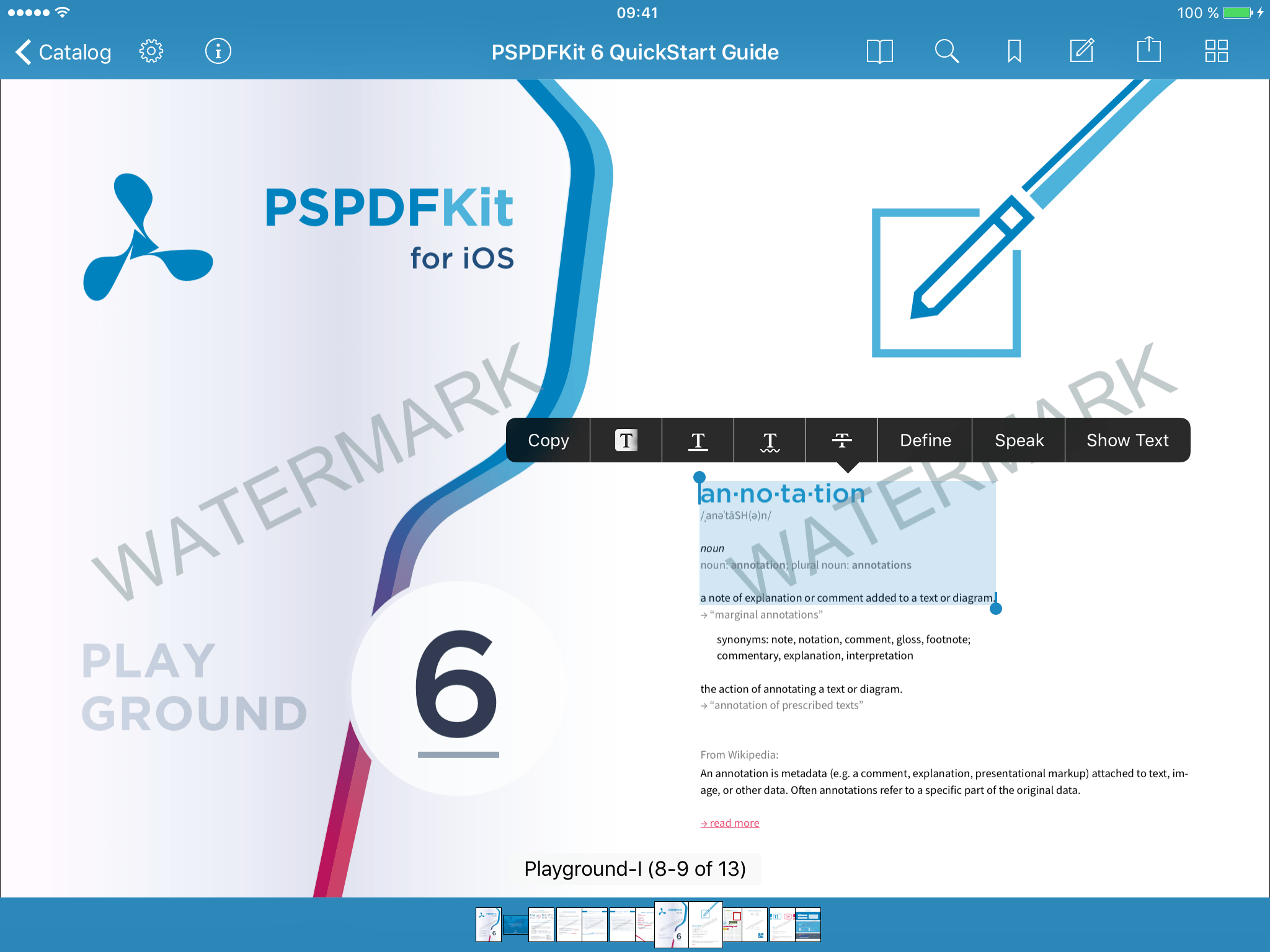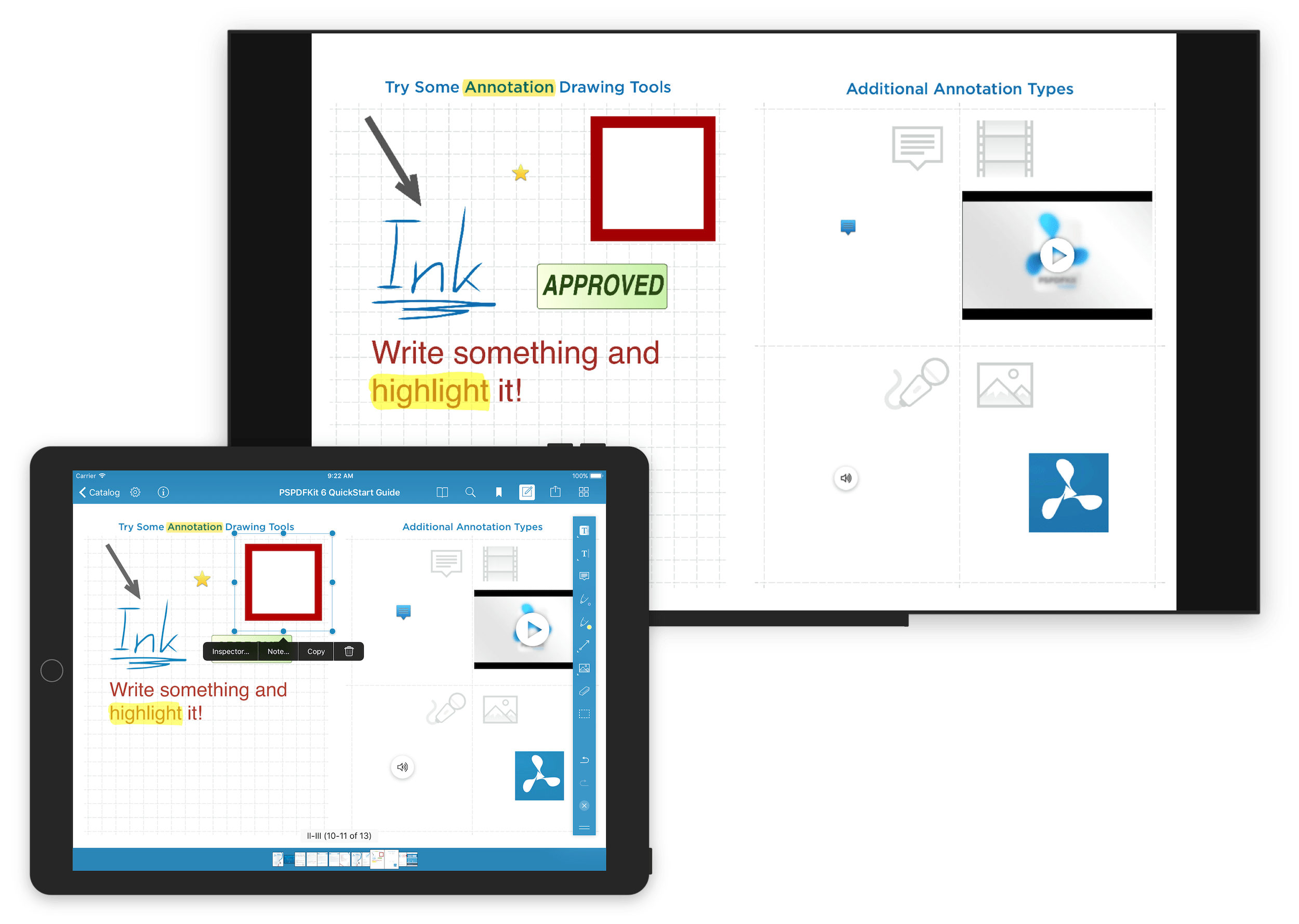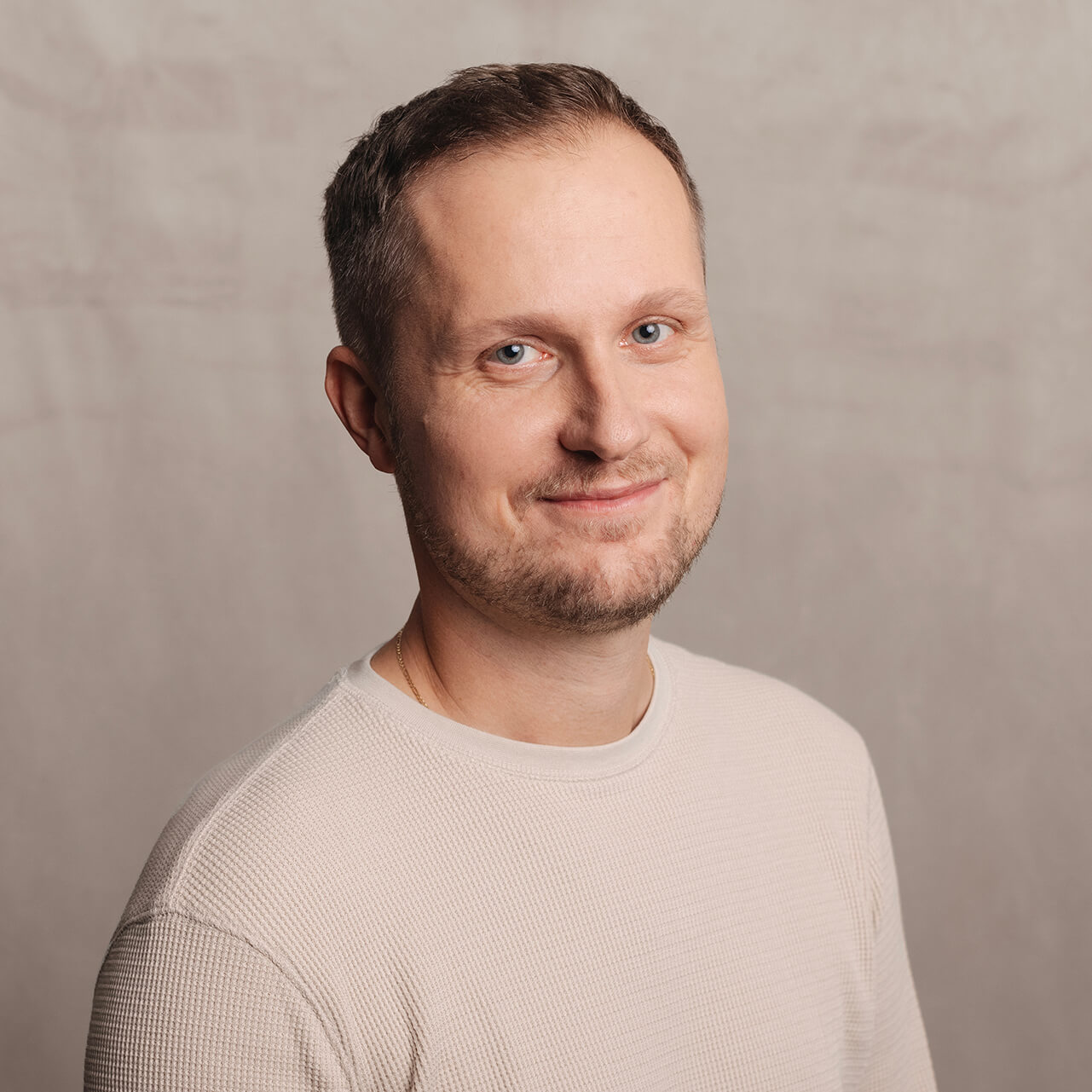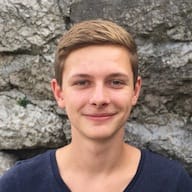
Version 6.8 of PSPDFKit for iOS features a completely revamped Digital Signature implementation, watermark filtering, some iOS 11 fixes and various smaller improvements and fixes. You can, as always, read up on all the details in the changelog.
Digital Signatures
We are excited to tell you that with PSPDFKit 6.8 for iOS we rewrote the core of our Digital Signature implementation for improved detection, validation and better error reporting. As a result, we also managed to completely drop our dependency on OpenSSL, reducing the size of our binary in the process.
The changes will also enable additional improvements and new features related to Digital Signatures in future releases, as we now own the full stack. Other than fixing an issue or two, the rewrite should not have an effect on your implementation, as there were no related API changes in this release.
Watermark Filtering
Many of our customers were asking about how to detect watermarks and filter them from text selection and page text extraction. We are thrilled to announce that you no longer have to worry about this. Watermarks are now detected and filtered from text selection and extraction by default. If, for any reason, you would like to keep the previous behavior, you can still do that by simply disabling PSPDFDocument.isWatermarkFilterEnabled.
iOS 11
iOS 11 has just been announced two weeks ago and we’re already busy testing it and fixing all the new issues that are popping up with the first seeds. This version 6.8 of PSPDFKit for iOS already includes a few fixes for better forward compatibility. It’s still too early in the iOS beta phase to guarantee that everything will work flawlessly, but we’re hard at work to make sure everything is smooth — just keep the SDK up to date.
Details
Like always, this release includes more polish and minor improvements.
Starting with version 6.8, the disclosure button in PSPDFOutlineViewController, used to expand and collapse elements, can be conveniently tinted via UIAppearance.
let disclosureButton = UIButton.appearance(whenContainedInInstancesOf: [PSPDFOutlineCell.self]) disclosureButton.tintColor = .red
UIButton *disclosureButton = [UIButton appearanceWhenContainedInInstancesOfClasses:@[PSPDFOutlineCell.class]]; disclosureButton.tintColor = UIColor.redColor;
We also also improved support for our style manager color presets. The annotation style view controller can now show color presets even without other color selection options, making it easy for you to limit color selection to just a few predefined colors. In addition we also extended the style manager API to make it easier for you to customize the shown presets. To learn more about color preset customization check out PresetCustomizationExample.swift in our example catalogue.

The privacy access denied UI now displays the app name and provides a link to the application’s Privacy Settings located in the Settings app.

Previous Releases
We also introduced a few new features worth mentioning in previous patch releases.
PSPDFLibrary is now capable of indexing individual annotations in a document, in addition to page content. This is enabled by default and can be disabled via PSPDFLibrary.shouldIndexAnnotations, if needed.
It’s now possible to mirror a document on an external screen, rendered in native resolution, syncing the view state, appearance mode and video playback. This can be enabled by setting PSPDFKit.sharedInstance.screenController.pdfControllerToMirror = pdfController. You can check out PSPDFScreenController for some more details and customization options.

This is just a small overview of the improvements and fixes we did in this version. Check out the PSPDFKit for iOS changelog for the full story.
PSPDFKit 1.1 for macOS
As of June 26th, we’ve also released PSPDFKit 1.1 for macOS, bringing it up-to date with the iOS version at the model-layer level. This includes improvements to Digital Signatures, Watermark Filtering, bug fixes, and more. See changelog for a detailed breakdown of all changes.

Matej is a software engineering leader from Slovenia. He began his career freelancing and contributing to open source software. Later, he joined Nutrient, where he played a key role in creating its initial products and teams, eventually taking over as the company’s Chief Technology Officer. Outside of work, Matej enjoys playing tennis, skiing, and traveling.



